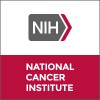LMB-2 Immunotoxin in Treating Young Patients With Relapsed or Refractory Leukemia or Lymphoma
Leukemia, Lymphoma

About this trial
This is an interventional treatment trial for Leukemia focused on measuring recurrent adult T-cell leukemia/lymphoma, recurrent childhood acute lymphoblastic leukemia, childhood Burkitt lymphoma, recurrent childhood acute myeloid leukemia, recurrent childhood large cell lymphoma, recurrent childhood lymphoblastic lymphoma, recurrent mycosis fungoides/Sezary syndrome, recurrent cutaneous T-cell non-Hodgkin lymphoma, recurrent/refractory childhood Hodgkin lymphoma, relapsing chronic myelogenous leukemia, acute undifferentiated leukemia
Eligibility Criteria
DISEASE CHARACTERISTICS: Histologically confirmed diagnosis of 1 of the following: Non-Hodgkin's lymphoma, including the following subtypes: Lymphoblastic lymphoma Burkitt's lymphoma Large cell lymphoma Adult T-cell leukemia/lymphoma Cutaneous T-cell lymphoma Peripheral T-cell lymphoma Hodgkin's disease Acute myeloid leukemia Chronic myelogenous leukemia Acute lymphoblastic leukemia (ALL) More than 5% blasts in the bone marrow (i.e., M2 marrow classification) Acute hybrid leukemia, including the following subtypes: Mixed lineage leukemia Biphenotypic leukemia Undifferentiated leukemia CD25-positive (CD25+) disease, meeting 1 of the following criteria: More than 15% of malignant cells are CD25+ by immunohistochemistry with anti-CD25 antibody More than 30% of malignant cells from a site are CD25+ by fluorescence-activated cell sorting analysis Measurable or evaluable disease Relapsed or refractory disease after at least 1 standard chemotherapy regimen AND 1 salvage regimen No available alternative curative therapies Ineligible for or refused hematopoietic stem cell transplantation OR disease activity that prohibits the required time to identify a suitable stem cell donor No CNS leukemia or lymphoma, as evidenced by any of the following criteria: Cerebrospinal fluid (CSF) WBC > 5/µl AND confirmation of CSF blasts Cranial neuropathies secondary to underlying malignancy CNS lymphoma detected by radiological imaging Prior CNS involvement with no current evidence of CNS malignancy allowed No isolated testicular ALL PATIENT CHARACTERISTICS: Age 6 months to 21 years Performance status ECOG 0-3 (≥ 12 years of age) Lansky 40-100% (< 12 years of age) Life expectancy Not specified Hematopoietic Pancytopenia due to disease allowed For patients without bone marrow involvement: Absolute neutrophil count > 1,000/mm^3 Platelet count > 50,000/mm^3 (transfusion independent) Hepatic Bilirubin ≤ 2.0 mg/dL AST and ALT ≤ 5 times upper limit of normal Hepatitis B surface antigen negative Hepatitis C antibody negative Renal Creatinine clearance ≥ 60 mL/min OR Creatinine, meeting the following age-related criteria: ≤ 0.8 mg/dL (≤ 5 years of age) ≤ 1.0 mg/dL (6 to 10 years of age) ≤ 1.2 mg/dL (11 to 15 years of age) ≤ 1.5 mg/dL (> 15 years of age) Calcium 2.0-2.9 mmol/L Cardiovascular Ejection fraction ≥ 45% by MUGA OR Shortening fraction ≥ 28% by echocardiogram Pulmonary Oxygen saturation ≥ 90% Other Sodium 130-150 mmol/L Potassium 3.0-5.5 mmol/L Magnesium 0.5-1.23 mmol/L HIV negative Not pregnant or nursing Negative pregnancy test Fertile patients must use effective contraception No clinically significant unrelated systemic illness that would preclude study participation No conditions that would preclude study compliance No serum that neutralizes > 75% of the activity of 1 μg/mL of LMB-2 immunotoxin in tissue culture (due to either anti-toxin or anti-mouse immunoglobulin G antibodies) No active graft-vs-host disease (i.e., off immunosuppression) PRIOR CONCURRENT THERAPY: Biologic therapy Prior autologous bone marrow transplantation (BMT) allowed At least 100 days since prior allogeneic BMT At least 1 week since prior colony-stimulating factors (e.g., filgrastim [G-CSF], sargramostim [GM-CSF], or epoetin alfa) Chemotherapy At least 2 weeks since prior chemotherapy (4 weeks for nitrosoureas) except intrathecal chemotherapy No other concurrent chemotherapy Endocrine therapy Concurrent corticosteroids allowed provided the dose has been stable for the past week and does not increase during study treatment Tapering or discontinuation of steroids allowed Radiotherapy At least 3 weeks since prior radiotherapy unless < 10% of marrow is irradiated and measurable disease exists outside the radiation port Surgery Not specified Other Recovered from all prior therapy At least 30 days since prior investigational agents Concurrent oral supplementation to maintain normal electrolyte levels allowed No concurrent anticoagulation therapy for disease-related conditions No other concurrent investigational agents
Sites / Locations
- Winship Cancer Institute of Emory University
- Sidney Kimmel Comprehensive Cancer Center at Johns Hopkins
- Warren Grant Magnuson Clinical Center - NCI Clinical Trials Referral Office
- Doernbecher Children's Hospital at Oregon Health & Science University
- St. Jude Children's Research Hospital
Outcomes
Primary Outcome Measures
Secondary Outcome Measures
Full Information
1. Study Identification
2. Study Status
3. Sponsor/Collaborators
4. Oversight
5. Study Description
6. Conditions and Keywords
7. Study Design
8. Arms, Groups, and Interventions
10. Eligibility
12. IPD Sharing Statement
Learn more about this trial
